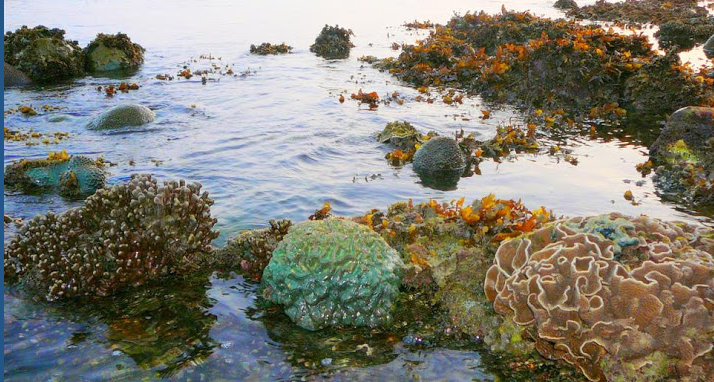Natural effects
Though these are natural threats to coral reefs, they have ALL been made infinitely worse by human activity (normally coral reefs would be better adapted to environmental threats) .
Cradle to Myriads of Species Millennia to Create |
Anthropogenic effects
First of all, corals cannot survive if the water temperature is too high. Secondly, warming seas and ocean acidification (see next point) are affecting reefs by causing mass coral bleaching events and slowing the growth of coral skeletons. Thirdly, the warming seas, ocean acidification and mass coral bleaching brought on by climate change is making infectious disease outbreaks more likely to become more frequent in the, now fragile, coral reef ecosystem.
Cyanide fishing: Fishermen dive down to the reef and squirt cyanide in coral crevices and on the fast-moving fish, to stun the fish, making them easy to catch. The cyanide poisons and kills most fish, including coral polyps, symbiotic algae and other small organisms necessary for healthy reefs. In addition, the fishermen rip apart the coral reefs with crowbars in order to catch the fish that have taken refuge in the reefs. Blast fishing: Fishermen use underwater explosions to damage the swim bladders of fish so that they float to the surface where they are easily captured. The blast of the explosions destroys coral and flattens the reef structure. Bottom trawling: Fishermen drag a fishing net along the sea bottom. Reefs in the net's path get mowed down; Long, wide patches of rubble and sand are all that is left in their wake. Also, fishing nets left as debris can be problematic in areas of wave disturbance; In shallow water, live corals become entangled int hese nets and are torn away from their bases and these nets can strange thousands of fish, sea turtles and marine animals. Muro-ami: This style of fishing involves scaring the fish into a net by pounding on the coral reef with sticks or other heavy objects that severely damage the coral reef. Overfishing: Often, too many fish are taken from one coral reef to sustain a population in that area. In 1950, no fisheries were reported as being over exploited whereas by 1996, 35% of fisheries were reporting over-exploitation and an additional 25% were reported as being near over-exploited. Over-fishing can reduce genetic variation in a population, making it harder for species to adapt to environmental change and mate. In addition, over-fishing can alter trophic interactions and cause unexpected indirect effects on the environment (see "Indirect ecological effects")
One important problem human activity (overfishing) has caused is the decrease in the herbivorous fish populations. Because there are less herbivorous fish to eat the plants (notably the algae), there is more algae. The algae grows much more quickly than the coral. And so, this excess of fast-growing algae will result in the coral being almost suffocated by the algal growth and the sunlight being unable to penetrate the algae and reach the coral.
|
Coral reefs may recover from periodic traumas caused by weather or other natural occurrences. If, however, corals are subjected to numerous and sustained stresses including those imposed by people, the strain may be too much for them to endure, and the coral reefs will perish.
The above video depicts the startling reality of what is to come to our coral reefs in the very near future. This video depicts life in the year 2065; life without one, single coral reef left on the face of the earth as a result of our terrible greed (human activity). However, we, in the year 2013, are at the turning point of this disaster; We can opt to save our coral reefs. (see Conservation page)


